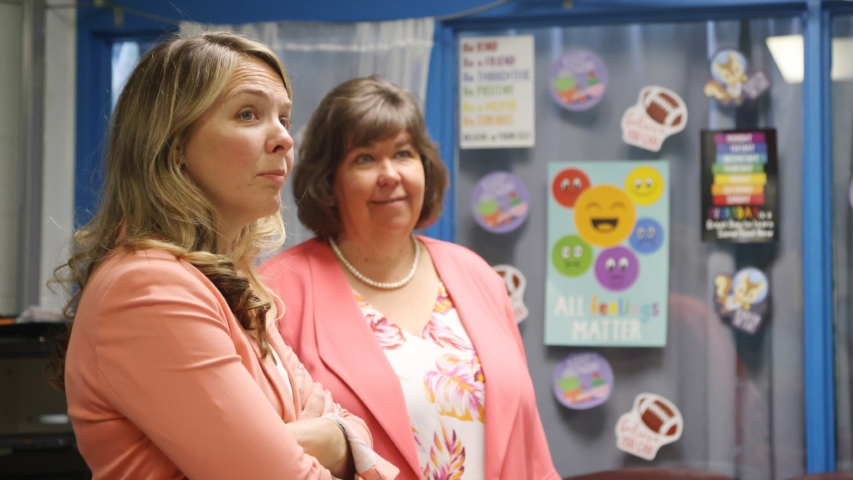
Jenna Sudds, Minister of Families, Children, and Social Development, along with Anita Vandenbeld, Member of Parliament for Ottawa West-Nepean, visited the Boys and Girls Club in Ottawa on Thursday, August 17, 2023. The tour aimed to explore and engage with the community organization. Photo credit: THE CANADIAN PRESS/ Patrick Doyle.
Families Minister Jenna Sudds has defended the federal $10-a-day child-care program, insisting that provinces and territories were fully aware of its implications when they signed on. This comes in the wake of opposition from daycares across various provinces, claiming that the program's financial constraints may force them out of business.
Operators in multiple provinces are contemplating withdrawal from the national child-care system, citing federal-provincial agreements that restrict fees without providing sufficient support to cover operational costs. Krystal Churcher, chair of the Association of Alberta Childcare Entrepreneurs, noted that the program has been underfunded from the start. In protest, Alberta operators are planning "rolling closures" to draw attention to the challenges of offering affordable child care without adequate financial backing.
The federal $10-a-day child-care program, a longstanding Liberal promise, materialized in 2021 with Finance Minister Chrystia Freeland's budget, which allocated $30 billion over five years to provinces and territories. Despite being heralded as a signature policy contributing to the economy and women's workforce participation, daycares argue that the allocated funds are insufficient.
Every province and territory eventually joined the program, with Ontario being the last to sign in March 2022. In exchange for federal funding, provinces had to implement the federal vision, which aimed to cut fees and increase wages for child-care workers.
However, operators across the country contend that, after over a year of implementation, the funds provided are inadequate to cover their costs. The YMCA in Ontario is seeking additional funding for its child-care programs, emphasizing the growing cost burden on operators.
Despite requests for more funds from Ontario, Finance Minister Chrystia Freeland has maintained the government's commitment to the 2021 budget allocation. Provinces, Sudds argues, entered into agreements with a clear understanding of expectations and are responsible for making the program successful.
Critics, like Churcher, argue that the program was rolled out hastily, freezing fees for participating centres, which now form the basis for provincial funding. In Alberta, daycare providers face limitations on fees they can charge parents, receiving provincial payments only up to the frozen fee level, with funding increasing by three percent annually.
As tensions rise between operators and the federal government, Sudds emphasizes the need for collaboration to ensure the success of the child-care program. The debate continues over whether the promised benefits of affordable child care will materialize as operators grapple with financial challenges.















